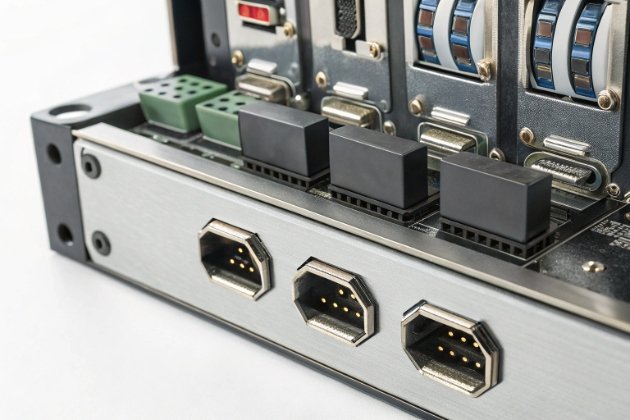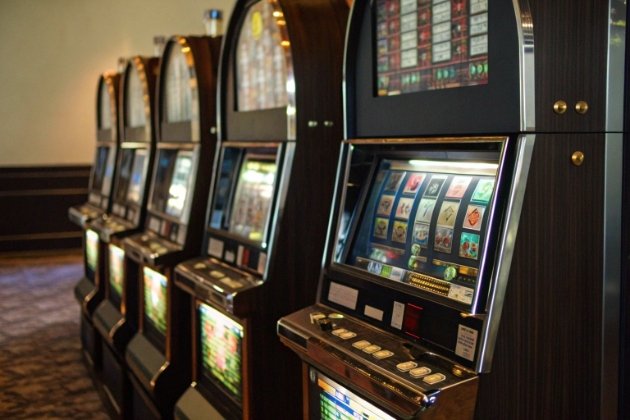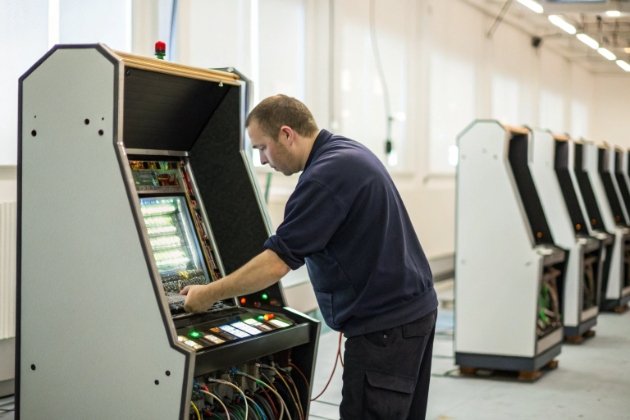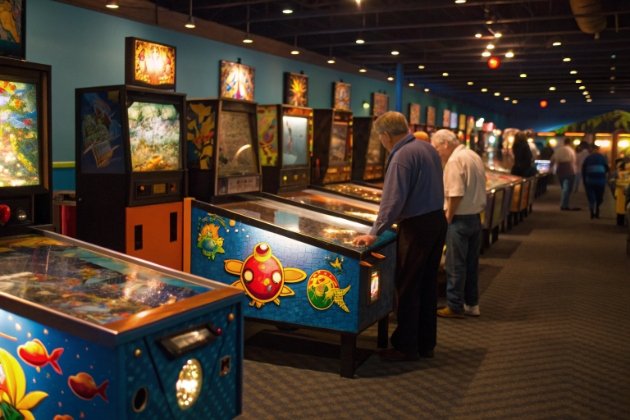I’ve met many venue owners who worry their cabinets will soon become outdated. I understand the fear of investing in machines that can’t adapt to new games and hardware.
Yes, gaming cabinets can support new game kits and hardware when they are built with modular design, standardized interfaces, and scalable architecture. These elements make upgrades simple, cost-effective, and reliable for the long term.
Modern gaming cabinets are no longer one-time investments—they are platforms designed for evolution. By choosing cabinets with modular components and open architectures 1, you can keep your setup fresh and competitive as gaming technologies progress.
How do you ensure the cabinets are compatible with future games?
I often talk to arcade owners who worry about having to replace entire cabinets every time a new game release hits the market. I know how costly and stressful that can be.
Gaming cabinets ensure compatibility with future games by using standardized connectors 2, modular control panels, and firmware that supports plug-and-play recognition of new game boards.

Compatibility begins with design. Cabinets are now engineered with modular bays and standardized interfaces such as USB 3, HDMI, and universal power connectors. This allows new hardware—like updated game boards, advanced GPUs, or new control panels—to be swapped in easily.
Key Compatibility Features
| Component | Description | Benefit |
|---|---|---|
| Modular Bays | Removable panels for quick access to internal parts | Faster upgrades |
| Standardized Interfaces | USB, HDMI, PCIe, and power connectors | Broad compatibility |
| Scalable Firmware | Detects new game kits automatically | Simplifies setup |
Cabinets designed with firmware scalability 4 can automatically detect and integrate with new software updates or plug-in game kits. This reduces downtime and minimizes the risk of incompatibility.
Additionally, expandable internal space ensures future devices or controllers can fit comfortably without redesigning the cabinet shell.
For operators, this means smoother transitions between game generations and less operational disruption.
Can I easily integrate new game software or hardware in the future?
When I first managed a gaming venue, I dreaded the idea of reinstalling everything for a single upgrade. It used to take hours, even days, to get new games running properly.
Yes, modern cabinets allow easy integration of new game software or hardware through modular slots, plug-in firmware systems, and centralized network updates 5.

The best cabinets support modular integration, which means you can replace or add new components like processors, memory cards, or I/O boards without changing the frame. Software updates can also be installed remotely, either through USB ports or a centralized server connection.
Integration Workflow Example
| Step | Action | Outcome |
|---|---|---|
| 1 | Insert new game kit or board | System recognizes the new hardware |
| 2 | Update firmware or drivers | Ensures smooth compatibility |
| 3 | Configure network settings | Synchronizes data and game parameters |
| 4 | Run test mode | Validates performance and stability |
This architecture reduces upgrade time by up to 70%.
Some advanced cabinets also offer hot-swap capability, letting technicians replace modules while the system remains powered, which minimizes downtime.
By investing in cabinets built with forward-compatible logic 6, you ensure your venue can quickly adapt to future updates without costly disruptions.
Will the cabinets be able to accommodate upgrades without major changes?
I’ve seen venue owners panic when new display standards appear, thinking they’ll need all-new machines. That fear is real—and unnecessary.
High-quality gaming cabinets are built with structural flexibility and reserved power and cooling capacity 7 to accommodate future upgrades without major physical changes.

The interior of modern gaming cabinets includes expandable mounting systems, allowing new components like larger screens or improved audio systems to fit easily. Manufacturers often design chassis with additional ports, extra fan mounts, and larger power supplies to handle future demands.
Upgrade Flexibility Breakdown
| Area | Upgrade Type | Built-in Support |
|---|---|---|
| Display | Larger or higher-resolution monitors | Adjustable mounts |
| Power | Higher wattage or added components | Extra power rails |
| Cooling | Enhanced airflow or liquid cooling | Modular fan brackets |
The structure is typically reinforced to support heavier panels or new control devices.
Meanwhile, modular design in control interfaces allows quick swaps between old-style buttons and touchscreens.
The result: you can evolve your gaming cabinets step-by-step, rather than replacing the entire setup each time technology changes.
How do you manage backward compatibility with older game systems?
Many long-time venue owners still keep older but profitable titles. I’ve helped clients run new and old systems side by side without any problems.
Backward compatibility is managed through adaptable input/output modules 8, multi-version firmware, and hybrid board slots that support legacy and modern systems alike.

Older systems often use unique wiring or control logic, but cabinets designed for professional venues include universal I/O adapters 9. These make it possible to connect older coin mechanisms, joysticks, or displays to the latest control boards.
Compatibility Strategy Example
| Type | Description | Function |
|---|---|---|
| I/O Adapter | Converts old signal types | Allows older devices to function |
| Dual Firmware | Runs both legacy and modern protocols | Prevents system conflicts |
| Multi-slot Design | Accepts various board shapes and connections | Ensures adaptability |
Software-level support is just as important. Some manufacturers provide dual-mode firmware that lets the same cabinet switch between older and newer game kits.
This helps preserve your investment in legacy content while still allowing room for innovation.
As a result, you can maintain variety in your game lineup, which keeps players engaged across different generations of content.
Conclusion
Gaming cabinets designed with modular architecture, standardized interfaces, and scalable firmware technologies 10 are future-proof investments ready for continuous upgrades.
Footnotes
1. Konami’s approach to modular arcade system architecture. ↩︎
2. USB.org outlines global connector and interface standards. ↩︎
3. USB standards ensure universal compatibility for gaming peripherals. ↩︎
4. Intel’s firmware scalability guide for hardware adaptability. ↩︎
5. AWS gaming infrastructure supports networked game updates. ↩︎
6. NVIDIA developer resources for forward-compatible gaming design. ↩︎
7. Cooler Master power and cooling design standards. ↩︎
8. Molex provides I/O connectivity solutions for industrial systems. ↩︎
9. Phoenix Contact I/O adapters for cross-system integration. ↩︎
10. UL’s certification framework for scalable firmware and electronics safety. ↩︎



